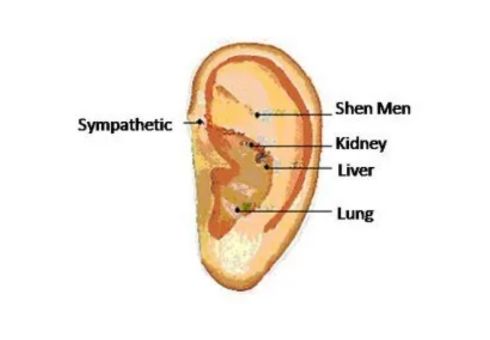You can be addicted to anything. Gambling, Food, Smoking, Vapes, Sex, Recreational Drugs, Pharmaceutical Drugs, Alcohol, and the list goes on and on. Again, you could be addicted to anything. Addicted to Chaos. Addicted to TV. Addicted to your Phone. Addicted to Video Games. Addicted to Work. Addicted to Fun. Addicted to Anxiety, Stress, Depression, Sadness, Loneliness. You can be addicted to any lifestyle habit that is excessive. When does a habit turn into an addiction? When does your obsession turn into another addiction?
We can also break these habits with persistence, the proper motivation, a strong support system and a team of health care professionals that understand the mental, emotional and physical agents that accelerate poor living habits or choices.
NADA (Acupuncture National Acupuncture Detoxification Association) www.acudetox.com
The NADA Protocol can help those suffering with the following conditions:
Insomnia, stress, food cravings (especially sugar or carbs), eating disorders, anxiety, irritability, mood swings, post-traumatic stress disorder (PTSD), internet addiction, mild depression, gambling, pharmaceutical drug withdrawal, substance cravings (nicotine, drugs, alcohol), anger issues and sadness.
What is the NADA Protocol?
The treatment protocol is based on the National Acupuncture Detoxification Association (NADA) protocol for addiction recovery and has been used in the U.S. since the 1970s. The procedure involves the placement of five (hair-like) needles in specific sites on each ear which correspond to specific organs including the lungs, liver, kidneys and nervous system. Ear points regulate all the glands (internal secretions) in the brain (the pituitary, pineal gland, etc.) which control hormonal and enzymatic activity throughout the body. They trigger a release of natural endorphins to increase relaxation, relieve tension, and ease substance cravings for those undergoing detoxification whether from narcotics or pharmaceuticals. Auricular acupuncture is one of the more widely used microsystems within Eastern medicine. Microsystems use one aspect of the body – for example, the ears, hands or feet – to treat conditions that are present anywhere in the body. Auricular acupuncture may be used as a primary mode of treatment or in conjunction with other treatments such as acupuncture, bodywork or herbal medicine. Examples of other microsystems include reflexology and Korean hand acupuncture. There have been thousands of research articles written on the efficacy of Acupuncture for addiction-related issues.
Often, adjunct points are used in addition to the NADA protocol. There is no “one size fits all” procedure. Each person is carefully observed for patterns of disharmony or imbalances in the energetic system of the body according to Chinese medical theory. NADA protocol can also help people struggling to manage diabetes, chronic depression, bipolar disorder and high blood pressure.
The most important question when trying to assist a patient with breaking a habit is …..What is your MOTIVATION? Why do you want to stop this habit? Most patients are really not sure or maybe have one reason. After discussing their health history, many reasons and health concerns become apparent, and then the listing of motivations begins. I will have them post the list to their refrigerator, office wall, car dashboard, etc…. as a friendly reminder to keep them on track. Mind re-training is definitely an integral part of the healing process. Reading the motivational list many times per day will help change the behavior pattern, just as an athlete or a musician will repeat the same task or musical phrase over and over a thousand times until it is executed with perfection and ease.
